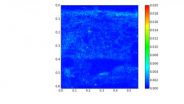(Press-News.org) Marijuana, the most widely used illicit drug, may double stroke risk in young adults, according to research presented at the American Stroke Association's International Stroke Conference 2013.
In a New Zealand study, ischemic stroke and transient ischemic attack (TIA) patients were 2.3 times more likely to have cannabis, also known as marijuana, detected in urine tests as other age and sex matched patients, researchers said.
"This is the first case-controlled study to show a possible link to the increased risk of stroke from cannabis," said P. Alan Barber, Ph.D., M.D., study lead investigator and professor of clinical neurology at the University of Auckland in New Zealand. "Cannabis has been thought by the public to be a relatively safe, although illegal substance. This study shows this might not be the case; it may lead to stroke."
The study included 160 ischemic stroke/TIA patients 18-55 years old who had urine screens upon admission to the hospital. Among the patients, 150 had ischemic stroke and 10 had TIAs. Sixteen percent of patients had positive drug screens, mostly male who also smoked tobacco.
Only 8.1 percent of controls tested positive for cannabis in urine samples. Researchers found no differences in age, stroke mechanism or most vascular risk factors between marijuana users and non-users.
In previous case reports, ischemic stroke and TIAs developed hours after cannabis use, Barber said. "These patients usually had no other vascular risk factors apart from tobacco, alcohol and other drug usage."
It's challenging to perform prospective studies involving illegal substances such as cannabis because "questioning stroke and control patients about cannabis use is likely to obtain unreliable responses," Barber said.
In the study, the regional ethics committee allowed researchers to use urine samples from other hospitalized patients. But researchers knew only the age, sex and ethnicity for matching due to a lack of consent.
The study provides the strongest evidence to date of an association between cannabis and stroke, Barber said. But the association is confounded because all but one of the stroke patients who were cannabis users also used tobacco regularly.
"We believe it is the cannabis and not tobacco," said Barber, who hopes to conduct another study to determine whether there's an association between cannabis and stroke independent of tobacco use. "This may prove difficult given the risks of bias and ethical strictures of studying the use of an illegal substance," he said. "However, the high prevalence of cannabis use in this cohort of younger stroke patients makes this research imperative."
Physicians should test young people who come in with stroke for cannabis use, Barber said.
"People need to think twice about using cannabis," because it can affect brain development and result in emphysema, heart attack and now stroke, he said.
###
Co-authors are: Heidi Pridmore, M.D.; Venkatesh Krishnamurthy, M.D.; Sally Roberts, M.D.; David A. Spriggs, M.D.; Kristie Carter, Ph.D.; and Neil E. Anderson, M.D. Author disclosures and funding information are on the abstract.
Follow news from the ASA International Stroke Conference 2013 via Twitter @HeartNews; #ISC13.
Statements and conclusions of study authors that are presented at American Stroke Association scientific meetings are solely those of the study authors and do not necessarily reflect association policy or position.
The association makes no representation or warranty as to their accuracy or reliability. The association receives funding primarily from individuals; foundations and corporations (including pharmaceutical, device manufacturers and other companies) also make donations and fund specific association programs and events. The association has strict policies to prevent these relationships from influencing the science content. Revenues from pharmaceutical and device corporations are available at www.heart.org/corporatefunding.
Note: Actual presentation is 1:42 p.m. HT/6:42 p.m. ET Thursday, Feb. 7, 2013.
All downloadable video/audio interviews, B-roll, animation and images related to this news release are on the right column of this link. Video clips with researchers/authors of studies will be added to the release links after embargo. END
Smoking marijuana associated with higher stroke risk in young adults
2013-02-06
ELSE PRESS RELEASES FROM THIS DATE:
Native Hawaiians have bleeding strokes at earlier age, independent of meth use
2013-02-06
Native Hawaiians and Pacific Islanders have more bleeding strokes at an earlier age than other people independent of methamphetamine abuse, according to research presented at the American Stroke Association's International Stroke Conference 2013.
"Drug abuse is a huge problem here and it definitely is a cause of hemorrhagic stroke," said Kazuma Nakagawa, M.D., lead investigator and assistant professor of medicine at the University of Hawaii. "But Native Hawaiians and Pacific Islanders are experiencing this form of stroke at a younger age even without methamphetamine use. ...
Tai Chi exercise may reduce falls in adult stroke survivors
2013-02-06
Tai Chi may reduce falls among adult stroke survivors, according to research presented at the American Stroke Association's International Stroke Conference 2013.
Compared to survivors receiving usual care or participating in a national fitness program for Medicare-eligible adults called SilverSneakers®, those practicing Tai Chi had the fewest falls.
Tai Chi is a martial art dating back to ancient China. It includes physical movements, mental concentration and relaxed breathing.
"Learning how to find and maintain your balance after a stroke is a challenge," said Ruth ...
Brain research provides clues to what makes people think and behave differently
2013-02-06
Differences in the physical connections of the brain are at the root of what make people think and behave differently from one another. Researchers reporting in the February 6 issue of the Cell Press journal Neuron shed new light on the details of this phenomenon, mapping the exact brain regions where individual differences occur. Their findings reveal that individuals' brain connectivity varies more in areas that relate to integrating information than in areas for initial perception of the world.
"Understanding the normal range of individual variability in the human ...
Induction of mild inflammation leads to cognitive deficits related to schizophrenia
2013-02-06
Researchers at the Institute for Comprehensive Medical Science, Fujita Health University and the National Institute for Physiological Sciences, Japan, along with colleagues from 9 other institutions, have identified an exceptional mouse model of schizophrenia. After screening over 160 mutant mouse strains with a systematic battery of behavioral tests, they identified a mutant mouse lacking the Schnurri-2 protein (Shn-2 KO) that exhibits behavioral deficits and other brain features consistent with schizophrenia. Shn-2 is an NF-B site-binding protein that binds enhancers ...
The wings of the Seagull Nebula
2013-02-06
Running along the border between the constellations of Canis Major (The Great Dog) and Monoceros (The Unicorn) in the southern sky, the Seagull Nebula is a huge cloud mostly made of hydrogen gas. It's an example of what astronomers refer to as an HII region. Hot new stars form within these clouds and their intense ultraviolet radiation causes the surrounding gas to glow brightly.
The reddish hue in this image is a telltale sign of the presence of ionised hydrogen [1]. The Seagull Nebula, known more formally as IC 2177, is a complex object with a bird-like shape that is ...
Study points to possible cause of, and treatment for, non-familial Parkinson's
2013-02-06
New York, NY (February 6, 2013) — Columbia University Medical Center (CUMC) researchers have identified a protein trafficking defect within brain cells that may underlie common non-familial forms of Parkinson's disease. The defect is at a point of convergence for the action of at least three different genes that had been implicated in prior studies of Parkinson's disease. Whereas most molecular studies focus on mutations associated with rare familial forms of the disease, these findings relate directly to the common non-familial form of Parkinson's. The study was published ...
X-rays reveal uptake of nanoparticles by soya bean crops
2013-02-06
Scientists have, for the first time, traced the nanoparticles taken up from the soil by crop plants and analysed the chemical states of their metallic elements. Zinc was shown to dissolve and accumulate throughout the plants, whereas the element cerium did not dissolve into plant tissue. The results contribute to the controversial debate on plant toxicity of nanoparticles and whether engineered nanoparticles can enter into the food chain. The study was published on 6 February 2013 in the journal ACS Nano.
The international research team was led by Jorge Gardea-Torresdey ...
Earth-like planets are right next door
2013-02-06
Using publicly available data from NASA's Kepler space telescope, astronomers at the Harvard-Smithsonian Center for Astrophysics (CfA) have found that six percent of red dwarf stars have habitable, Earth-sized planets. Since red dwarfs are the most common stars in our galaxy, the closest Earth-like planet could be just 13 light-years away.
"We thought we would have to search vast distances to find an Earth-like planet. Now we realize another Earth is probably in our own backyard, waiting to be spotted," said Harvard astronomer and lead author Courtney Dressing (CfA).
Dressing ...
Study: Firms that purport to value shareholders pay CEOs more
2013-02-06
CHAMPAIGN, Ill. — Ever wonder why CEOs at poorly performing companies continue to receive exorbitant pay packages? According to a study from a University of Illinois labor professor, firms that trumpet how much they value shareholders actually pay their CEOs more, regardless of the quality of their performance as executives.
Using compensation data from 290 chief executives at large U.S. firms over an 11-year period, Taekjin Shin, a professor of labor and employment relations at Illinois, shows that CEOs at firms with the appearance of a "shareholder-value orientation" ...
Environmental factors determine whether immigrants are accepted by cooperatively breeding animals
2013-02-06
Cichlid fish are more likely to accept immigrants into their group when they are under threat from predators and need reinforcements, new research shows. The researcher suggests that there are parallels between cooperatively breeding fish's and humans' regulation of immigrants. The research was published today, 6 February 2013, in the journal Proceedings of the Royal Society B.
The Princess of Lake Tanganyika (Neolamprologus pulcher), a cichlid fish which is popular in home aquariums, are cooperatively breeding fish with a dominant breeding pair and several 'helper' ...




